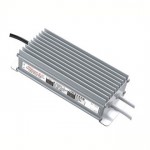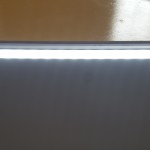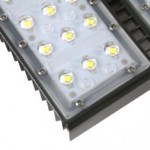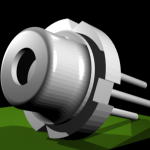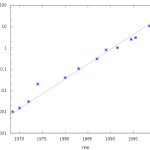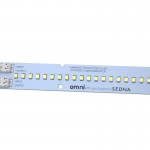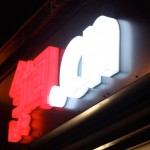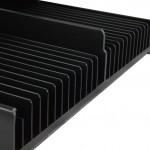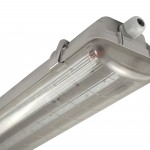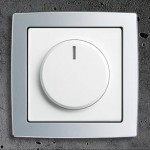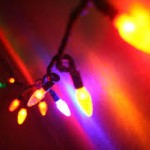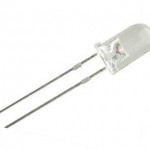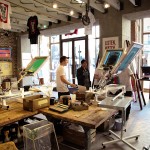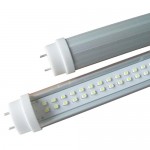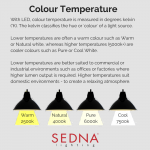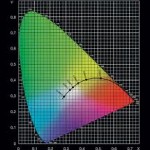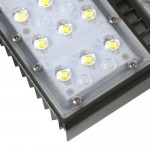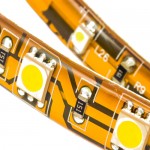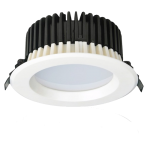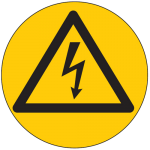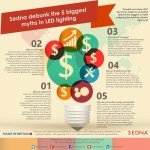Posted on May 3, 2016
An LED driver is a self contained power supply and regulator for either one or a string of LEDs. There are a wide range of LED drivers and it is essential to know which one is suitable for your needs. The driver is an essential component in a lighting system therefore it is important to choose…
Posted on April 27, 2016
Do you want to install your LED strip but don’t know where to start? Here is an easy step by step guide.
Posted on March 23, 2016
In this 3 part series we will discuss what makes a great luminaire. There are various 2 kinds of LED chips, COB and SMD used. In this post, we will discuss the different kind of LED (light emitting diode) SMD (surface mount diode) for your needs. If you look at the SMD chips…
Posted on March 16, 2016
The future of LEDs has been put to question by the inventor himself, Dr Shuji Nakamura. The Nobel prize winner Nakamura has suggested that the way forward for lighting will no longer be LED but in fact, laser diodes. The blue led inventor has founded a new company known as SoraaLaser which is a spin-off from Soraa…
Posted on February 11, 2016
In 1965 Gordon E. Moore was the director of research and development at Fairchild semiconductor. He was asked to make a prediction of how the semiconductor industry would develop in the next 10 years, The article he produced, stated that by 1975 there would be a possibility that 65,000 components on a single quarter-inch semiconductor….
Posted on February 3, 2016
The LED linear light engines are a simple cost effective lighting solution. This new technology means that you are able to change the engine, rather than spend a few hundred pounds to replace the whole fitting, costing only a few pounds. This makes it truly cost effective and means that there isn’t unnecessary waste. Our…
Posted on January 22, 2016
Once you have chosen the correct LED signage modules from Part 1. It is now time to light up your signage. Step 1. Make sure you could clean your signage, to give the best light possible. Step 2. Remove the sticky tape from the module. Step 3. Layout the modules, making sure to…
Posted on January 13, 2016
We know that LED technology offers many benefits, but there has been a lack of specifications that has made it challenging to interchange LED light sources from different manufacturers. Zhaga is a global consortium of companies from the international lighting industry, with the main goal of boost LED adoption to benefit all levels for the…
Posted on January 8, 2016
Are you thinking about getting LED signage modules, but don’t know where to start? Here is a step by step guide to calculating the required amount of LED signage modules for your signage. Step 1. To choose your modules. Measure the depth of your light box/built-up lettering. Round up to the nearest option in…
Posted on December 16, 2015
LED lighting is the replacement of the traditional incandescent and fluorescent bulbs and tubes. LED lighting is better in efficiency and energy saving, lasting much longer than traditional lighting and can give a much better quality lighting environment. However, within the industry there is the issue of periodic modulation or flicker. Here is brief…
Posted on December 9, 2015
Having a well lit room can make a significant difference to work and home life. If a room isn’t significantly lit, it can become a hazard, therefore a number of measure put in place to check the efficiency in the lighting industry, which is often referred to as the lifespan of the light. When…
Posted on December 1, 2015
Are you planning to make the switch to LED lighting and don’t know where to start? With so many companies and brands offering different features, it is hard to know where to start! Here are 5 steps to consider when choosing your LED lighting. 1. Correlated Color Temperature Correlated color temperature or CCT for short, is…
Posted on November 25, 2015
What does it do? A data repeater is essentially a signal amplifier for LED lighting used to amplify control signals across larger distances. The power capabilities of an existing LED controller are extended in order to add more Red, Green, Blue (RGB) LED Lighting than it is originally designed to cope with. …
Posted on November 18, 2015
DALI (Digital Addressable Lighting Interface) is a non-proprietary interface standard for dimmable control gears and is a protocol set out in the technical standard IEC 62386. DALI is known to be a versatile industrial standard and is interchangeable for different manufacturers, ensuring consistent dimming performance across all dimming ballasts regardless of type or manufacturer. Due to DALI’s…
Posted on November 11, 2015
As December is approaching, you start to notice the Christmas lights going up on various houses, but when you see these houses covered from head to toe in flashing lights, you start to wonder, ‘how much does all this cost?’ Well, since LED lighting technology has become so advanced, as well as making a…
Posted on November 4, 2015
Since LED lighting was invented, it has evolved over time to become one of the most cost effective and energy efficient lights around. Here is an explanation of the different types of chips used in the LED products used around the home as well as in commercial spaces. LED DIP Chip DIP (Dual In-Line…
Posted on October 28, 2015
Pumpkins are a must have for Halloween festivities, in order to create a spooky masterpiece, here is a step by step guide to an energy efficient LED pumpkin. Step 1: Once you have selected your pumpkin, cut around the top of the pumpkin using a keyhole saw or knife, or alternatively, as an LED light…
Posted on January 23, 2015
Complete LED fittings are perfect for the print industry, with LED offering a number of benefits over conventional tube lighting: Improved and higher colour rendering index (CRI) of 80+, compared with conventional lighting with just 25-30, An enhanced lifetime compared with conventional tubes (which degrade after 1000 hours use) A 40,000 hour lifetime – which remains virtually degradation free until…
Posted on January 13, 2015
The US Department of Energy (DOE) reckon fluorescent tubes account for more than 2.3 billion of the tubes installed in commercial American ceilings, and they’re found throughout warehouses and businesses in the UK too. LED tubes save considerable energy over fluorescent tubes, but there are a number of hurdles for adoption of LED tube…
Posted on December 24, 2014
A major benefit of LED lighting technology is the ability to create and control the colour temperature of the light during the production process. Colour temperature is measured in Kelvin, which gives an indication to the visual appearance of the light given by the luminaire, albeit a shade of white. The higher the Kelvin…
Posted on
Binning, in relation to LEDs is a practice designed to maximize effective utilisation in the production of LEDs. In LED production, a single round wafer is coated with materials to create a semiconductor which forms the ‘heart’ of the blue LED. This is then sliced into small rectangles, wire bonds are inserted and the phosphor…
Posted on
A heat sink is needed to control the temperature around a lighting device and can be vital in facilitating a long working life for the product. When the design of a device does not effectively distribute unwanted heat away into the surrounding air, a heat sink is used to control the temperature. …
Posted on
What’s the difference between SMD 3528 and SMD 5050 with LED Strips? LED Strips, used for effects round the home and in commercial LED lighting applications are most commonly offered in SMD 3528 or SMD 5050 variations – but what is the difference? SMD stands for a ‘surface mount device’, where…
Posted on December 16, 2014
Feedback from contractors and distributors who work with our commercial LED lighting products like recessed downlights suggests there are a number of common misconceptions surrounding fire rated downlights, what they do and when they are needed – which may be costing unnecessary expense. When a hole is cut into a ceiling to fit a…
Posted on December 8, 2014
Constant voltage and constant current are different types of LED power supply system. It is important to know what type of product yours is, as the two are incompatible. Using constant voltage and constant current in the same system will damage the product. Constant Current Constant current products cannot be used with constant…
Posted on October 31, 2014
We put together these ‘5 myths of LED’ to try and debunk some of the common misconceptions surrounding LED lighting technology, common mistakes or assumptions people make about LED – be it commercial, industrial domestic or exterior lighting products. Many assume they are expensive. With investors seeking ROI they may presume this to be…
Posted on October 1, 2014
This video, the first in Sedna’s Understanding LED series helps describe what IES Data is, and what IES files are used for. IES stands for Illuminating Engineering Society. The IES was established to bring together those with lighting knowledge for the benefit of the public by translating their knowledge into action. IES lighting data and…
Posted on August 18, 2014
Sedna Lighting offer an explanation of the key differences between LED and conventional lighting: Interested in selling LED? Why not enquire about becoming a distributor.

